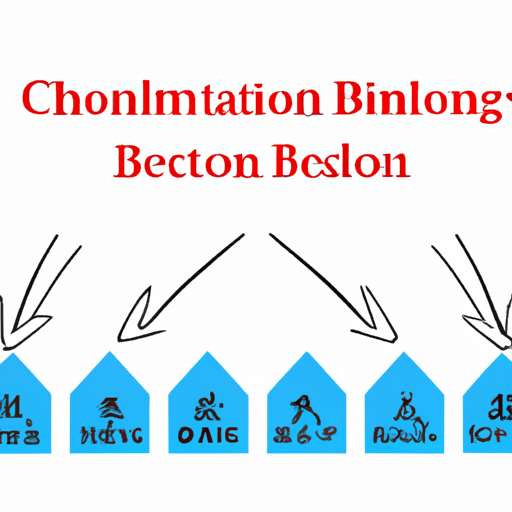
$100.0000

How Big is the Market Size of Chinese Journal Classification? I. IntroductionIn the rapidly evolving landscape of academic publishing, journal classification plays a pivotal role in organizing and disseminating research. Chinese Journal Classification refers to the systematic categorization of academic journals in China, which is essential for researchers, institutions, and publishers alike. This classification not only aids in the identification of reputable journals but also influences funding, research visibility, and academic recognition. The purpose of this article is to explore the market size and dynamics of Chinese journal classification, shedding light on its significance in the broader context of academic publishing. II. Overview of the Chinese Academic Publishing Landscape A. Growth of Academic Publishing in ChinaChina has witnessed remarkable growth in academic publishing over the past few decades. The increase in research output is staggering, with the country now producing a significant portion of the world’s academic papers. According to recent statistics, China ranks second globally in terms of research output, trailing only the United States. This surge can be attributed to various factors, including substantial government initiatives and funding aimed at enhancing research capabilities. B. Role of Journals in Academic CommunicationJournals serve as the primary medium for academic communication, allowing researchers to share their findings with the global community. In China, the role of journals has become increasingly important as the country seeks to establish itself as a leader in scientific research. The classification of these journals is crucial for ensuring that researchers can easily navigate the vast array of publications available. C. Types of Journals in ChinaThe Chinese journal landscape is diverse, encompassing both national and international journals. National journals often focus on local research and issues, while international journals aim to reach a broader audience. Additionally, the rise of open access journals has transformed the publishing model, allowing for greater accessibility to research findings. Subscription-based journals, on the other hand, continue to play a significant role in the academic ecosystem. III. Understanding Journal Classification Systems A. Definition and Purpose of Journal ClassificationJournal classification systems are frameworks used to categorize academic journals based on various criteria, such as subject matter, impact factor, and audience. These systems help researchers identify suitable journals for their work and facilitate the evaluation of journal quality. B. Major Classification Systems in ChinaIn China, several prominent classification systems exist. The Chinese Academy of Sciences (CAS) classification is one of the most recognized, categorizing journals into different tiers based on their impact and relevance. The Chinese Social Sciences Citation Index (CSSCI) is another significant system, focusing on social sciences and humanities journals. Other notable classification systems also contribute to the organization of academic literature in China. C. Importance of Classification for Researchers and InstitutionsFor researchers, journal classification is vital for ensuring that their work is published in reputable journals, which can enhance their academic standing and career prospects. Institutions also rely on these classifications to assess the quality of research output and allocate funding accordingly. IV. Market Size Estimation A. Factors Influencing Market SizeSeveral factors influence the market size of Chinese journal classification. The number of journals and publications has increased dramatically, reflecting the growth of academic research in the country. Additionally, institutional and governmental support plays a crucial role in shaping the market dynamics. B. Current Market Size EstimatesCurrent estimates suggest that the market for journal classification in China is substantial. Revenue generated from journal subscriptions is a significant contributor, with many institutions investing heavily in access to reputable journals. The impact of open access on market dynamics cannot be overlooked, as it has introduced new revenue models and altered traditional publishing practices. C. Comparative Analysis with Global Journal Classification MarketsWhen compared to global journal classification markets, China’s market is unique. While many countries have established classification systems, the rapid growth of Chinese academic publishing presents both opportunities and challenges. Understanding these dynamics is essential for stakeholders looking to navigate the market effectively. V. Key Players in the Market A. Major Academic Publishers in ChinaThe Chinese journal classification market is dominated by several major academic publishers. Domestic publishers, such as Science Press and Higher Education Press, play a crucial role in disseminating research. Additionally, international publishers operating in China, like Elsevier and Springer, contribute to the diversity of the journal landscape. B. Role of Academic Institutions and LibrariesAcademic institutions and libraries are key players in the journal classification market. They not only support researchers in accessing relevant journals but also play a role in the evaluation and selection of journals for publication. Their influence on the market cannot be underestimated. C. Emerging Players and Startups in Journal Classification TechnologyThe rise of technology has given birth to emerging players and startups focused on journal classification. These companies leverage data analytics and machine learning to enhance the classification process, providing researchers with more efficient tools for navigating the academic landscape. VI. Trends and Challenges in Chinese Journal Classification A. Trends Shaping the MarketSeveral trends are currently shaping the Chinese journal classification market. Digital transformation and technology integration are at the forefront, with many publishers adopting online platforms for journal access. The increasing emphasis on open access is also a significant trend, as researchers and institutions seek greater visibility for their work. Furthermore, the globalization of research and collaboration is fostering a more interconnected academic community. B. Challenges Faced by the MarketDespite the positive trends, the Chinese journal classification market faces several challenges. Quality control and standardization issues persist, as the rapid growth of journals can lead to inconsistencies in classification. Additionally, competition from international journals poses a threat to domestic publications, while intellectual property concerns continue to be a significant issue in the academic publishing landscape. VII. Future Outlook A. Predictions for Market GrowthThe future of the Chinese journal classification market appears promising. As research output continues to grow, the demand for effective classification systems will increase. Predictions suggest that the market will expand further, driven by technological advancements and the ongoing push for open access. B. Potential Changes in Classification SystemsAs the market evolves, changes in classification systems are likely. The integration of new technologies may lead to more dynamic and responsive classification frameworks, allowing for better alignment with the needs of researchers and institutions. C. The Role of Technology in Shaping the Future of Journal ClassificationTechnology will play a crucial role in shaping the future of journal classification. Innovations in data analytics, artificial intelligence, and machine learning will enhance the classification process, making it more efficient and user-friendly. These advancements will ultimately benefit researchers, institutions, and publishers alike. VIII. ConclusionIn summary, the market size of Chinese journal classification is substantial and continues to grow in response to the increasing demand for academic publishing. Understanding the dynamics of this market is essential for stakeholders, including researchers, institutions, and publishers. As the landscape evolves, the importance of effective journal classification will only increase, shaping the future of academic communication in China and beyond. IX. References1. Academic articles and studies on Chinese journal classification.2. Industry reports and market analyses on academic publishing in China.3. Relevant websites and databases providing insights into the Chinese academic landscape. This exploration of the market size of Chinese journal classification highlights its significance in the academic publishing ecosystem, emphasizing the need for continued research and adaptation in this dynamic field.

Important Product Categories for Chinese Text Classification I. Introduction A. Definition of Text ClassificationText classification is the process of categorizing text into predefined groups or classes. This technique is widely used in various applications, from spam detection in emails to sentiment analysis in social media. In the context of the Chinese language, text classification presents unique challenges and opportunities due to the language's complexity and rich cultural context. B. Importance of Text Classification in Chinese LanguageWith over a billion speakers, Chinese is one of the most widely used languages globally. The rapid growth of digital content in Chinese, particularly in e-commerce, social media, and news, has made text classification an essential tool for businesses and organizations. Effective classification can enhance user experience, improve customer service, and provide valuable insights into consumer behavior. C. Overview of Product Categories in Chinese Text ClassificationThis blog post will explore the key product categories for Chinese text classification, including e-commerce, news and media, social media, finance, healthcare, education, and travel. Each category presents unique challenges and opportunities for text classification, making it crucial for businesses to understand and implement effective strategies. II. Understanding Chinese Text Classification A. The Role of Natural Language Processing (NLP)Natural Language Processing (NLP) is a branch of artificial intelligence that focuses on the interaction between computers and human language. In Chinese text classification, NLP techniques are employed to analyze and interpret text data, enabling machines to understand and categorize content effectively. B. Challenges in Chinese Text Classification 1. Language ComplexityChinese is a tonal language with a vast array of dialects and regional variations. This complexity can lead to difficulties in accurately classifying text, as the same word may have different meanings in different contexts. 2. Character-Based NatureUnlike alphabetic languages, Chinese is character-based, meaning that words are formed from individual characters. This characteristic complicates tokenization, the process of breaking down text into manageable units for analysis. 3. Contextual NuancesChinese text often relies heavily on context, making it challenging to classify accurately. Words may change meaning based on their usage in a sentence, requiring sophisticated algorithms to capture these nuances. III. Key Product Categories for Chinese Text Classification A. E-commerce and Retail 1. Product DescriptionsIn the e-commerce sector, product descriptions are crucial for attracting customers. Text classification can help categorize products based on their descriptions, making it easier for consumers to find what they are looking for. 2. Customer ReviewsAnalyzing customer reviews through text classification can provide insights into consumer sentiment and product performance. Businesses can identify trends and areas for improvement by categorizing reviews based on sentiment. 3. Category ClassificationEffective category classification ensures that products are organized correctly, enhancing the shopping experience. This process involves classifying products into relevant categories based on their features and descriptions. B. News and Media 1. Article CategorizationIn the fast-paced world of news, timely article categorization is essential. Text classification can help news organizations quickly sort articles into categories such as politics, sports, and entertainment. 2. Sentiment AnalysisSentiment analysis in news articles can provide insights into public opinion on various issues. By classifying articles based on sentiment, media outlets can gauge audience reactions and adjust their content strategies accordingly. 3. Topic DetectionTopic detection involves identifying the main themes of articles. This process can help news organizations tailor their content to audience interests and improve engagement. C. Social Media 1. User-generated ContentSocial media platforms are flooded with user-generated content, making it challenging to manage. Text classification can help categorize posts, comments, and messages, enabling better content moderation and user engagement. 2. Trend AnalysisBy classifying social media content, businesses can identify emerging trends and topics of interest. This information can inform marketing strategies and product development. 3. Brand MonitoringText classification can help companies monitor their brand's online presence by categorizing mentions and sentiment across social media platforms. This analysis can provide valuable insights into brand perception and customer satisfaction. D. Finance and Investment 1. Financial ReportsIn the finance sector, text classification can help categorize financial reports, making it easier for analysts to access relevant information quickly. 2. Market AnalysisBy classifying news articles and reports related to market trends, investors can make informed decisions based on the latest information. 3. Risk AssessmentText classification can aid in risk assessment by categorizing reports and news articles related to potential risks, helping businesses and investors mitigate potential losses. E. Healthcare 1. Medical RecordsIn healthcare, text classification can help organize and categorize medical records, improving patient care and data management. 2. Patient FeedbackAnalyzing patient feedback through text classification can provide insights into patient satisfaction and areas for improvement in healthcare services. 3. Research PublicationsText classification can help categorize research publications, making it easier for healthcare professionals to access relevant studies and findings. F. Education 1. Course MaterialsIn the education sector, text classification can help categorize course materials, making it easier for students to find relevant resources. 2. Student FeedbackAnalyzing student feedback through text classification can provide insights into the effectiveness of teaching methods and course content. 3. Research PapersText classification can help categorize research papers, facilitating easier access to relevant studies for educators and researchers. G. Travel and Hospitality 1. Reviews and RatingsIn the travel industry, text classification can help categorize reviews and ratings, providing valuable insights into customer experiences and preferences. 2. Travel BlogsClassifying travel blogs can help travelers find relevant content based on their interests, enhancing their travel planning experience. 3. Customer Service FeedbackAnalyzing customer service feedback through text classification can help businesses identify areas for improvement and enhance customer satisfaction. IV. Techniques and Tools for Chinese Text Classification A. Machine Learning Approaches 1. Supervised LearningSupervised learning involves training a model on labeled data, allowing it to learn patterns and make predictions based on new, unseen data. This approach is commonly used in text classification tasks. 2. Unsupervised LearningUnsupervised learning involves training a model on unlabeled data, allowing it to identify patterns and group similar data points. This approach can be useful for exploratory analysis in text classification. B. Deep Learning Models 1. Neural NetworksNeural networks are a powerful tool for text classification, capable of learning complex patterns in data. They can be particularly effective in handling the nuances of the Chinese language. 2. TransformersTransformers, a type of deep learning model, have revolutionized NLP tasks, including text classification. They excel at understanding context and relationships between words, making them ideal for Chinese text classification. C. Popular Libraries and Frameworks 1. TensorFlowTensorFlow is a popular open-source library for machine learning and deep learning, widely used for text classification tasks. 2. PyTorchPyTorch is another popular deep learning framework that offers flexibility and ease of use, making it suitable for NLP tasks. 3. Jieba for TokenizationJieba is a widely used library for Chinese text segmentation, essential for preprocessing text data before classification. V. Case Studies A. E-commerce Platforms 1. Alibaba's Product ClassificationAlibaba employs advanced text classification techniques to categorize millions of products, enhancing the shopping experience for users. 2. JD.com's Review AnalysisJD.com uses sentiment analysis to categorize customer reviews, providing valuable insights into product performance and customer satisfaction. B. News Aggregators 1. Toutiao's Content CategorizationToutiao, a popular news aggregator, utilizes text classification to categorize articles, ensuring users receive relevant content based on their interests. C. Social Media Platforms 1. Weibo's Sentiment AnalysisWeibo employs sentiment analysis to monitor user-generated content, helping brands understand public perception and adjust their strategies accordingly. VI. Future Trends in Chinese Text Classification A. Advancements in NLP TechnologiesAs NLP technologies continue to advance, we can expect more accurate and efficient text classification methods, particularly for the Chinese language. B. Increased Use of AI and Machine LearningThe growing adoption of AI and machine learning in various industries will further enhance text classification capabilities, enabling businesses to gain deeper insights from their data. C. Growing Importance of Multimodal DataAs businesses increasingly rely on multimodal data (text, images, audio), text classification will evolve to incorporate these diverse data types, providing a more comprehensive understanding of consumer behavior. VII. Conclusion A. Recap of Key Product CategoriesIn summary, Chinese text classification plays a vital role across various product categories, including e-commerce, news and media, social media, finance, healthcare, education, and travel. Each category presents unique challenges and opportunities for businesses. B. The Importance of Continuous Improvement in Text ClassificationAs the digital landscape continues to evolve, businesses must prioritize continuous improvement in their text classification strategies to stay competitive and meet the changing needs of consumers. C. Final Thoughts on the Future of Chinese Text ClassificationThe future of Chinese text classification is promising, with advancements in NLP technologies and the increasing use of AI and machine learning. By embracing these trends, businesses can unlock valuable insights and enhance their operations in the ever-growing digital landscape. VIII. References A. Academic Journals- Research papers on NLP and text classification techniques. B. Industry Reports- Reports on the impact of text classification in various industries. C. Online Resources and Tools- Websites and tools for text classification and NLP in the Chinese language. This blog post provides a comprehensive overview of the important product categories for Chinese text classification, highlighting the significance of this technology in various sectors and the techniques used to implement it effectively.

Similar Recommendations for Chinese Book Classification Components I. IntroductionBook classification is a fundamental aspect of library science and information management, serving as a bridge between readers and the vast world of literature. In the context of Chinese literature, the significance of effective classification cannot be overstated. With a rich history that spans thousands of years, Chinese literature encompasses a diverse array of genres, themes, and authors, making it essential to have a robust classification system in place. This article aims to provide recommendations for effective classification components that can enhance the organization and accessibility of Chinese literary works. II. Understanding Book Classification A. Definition of Book ClassificationBook classification refers to the systematic arrangement of books and other materials in a library or information system based on their subject matter, author, genre, or other relevant criteria. This process facilitates easier retrieval and management of information, allowing users to locate resources efficiently. B. Historical Context of Book Classification in ChinaThe history of book classification in China dates back to ancient times, with early systems emerging during the Han Dynasty (206 BCE – 220 CE). The "Siku Quanshu" (Complete Library of the Four Treasuries) is one of the most notable early classification efforts, categorizing texts into four main categories: classics, history, philosophy, and literature. Over the centuries, various classification systems have evolved, reflecting the changing landscape of Chinese literature and scholarship. C. Importance of Classification in Libraries and Information SystemsEffective classification is crucial for libraries and information systems as it enhances user experience, promotes resource discovery, and supports academic research. In the context of Chinese literature, a well-structured classification system can help preserve cultural heritage and facilitate access to a wealth of literary works. III. Key Components of Book Classification A. Subject Classification 1. Overview of Subject ClassificationSubject classification involves organizing books based on their content and themes. This method allows readers to explore related works and gain a deeper understanding of specific topics. 2. Common Subject Categories in Chinese LiteratureIn Chinese literature, common subject categories include:- Classical literature- Modern literature- Poetry- Historical texts- Philosophy- Folklore and mythology 3. Examples of Effective Subject Classification SystemsThe Dewey Decimal Classification (DDC) and the Library of Congress Classification (LCC) are two widely used systems that can be adapted for Chinese literature. For instance, DDC can be modified to include specific categories for Chinese literary works, while LCC can provide a more nuanced approach to subject classification. B. Author Classification 1. Importance of Author ClassificationAuthor classification is essential for recognizing the contributions of individual writers and facilitating the exploration of their works. This method allows readers to discover other writings by the same author and understand their literary evolution. 2. Notable Chinese Authors and Their ClassificationProminent Chinese authors such as Confucius, Laozi, Lu Xun, and Mo Yan have made significant contributions to literature. Classifying their works based on their literary styles, themes, and historical contexts can provide valuable insights into their impact on Chinese literature. 3. Methods for Author ClassificationAuthor classification can be achieved through various methods, including chronological organization, thematic grouping, and biographical categorization. Libraries can create dedicated sections for notable authors, making it easier for readers to locate their works. C. Genre Classification 1. Definition and Significance of Genre ClassificationGenre classification involves categorizing books based on their literary form and style. This method is significant as it helps readers identify works that align with their preferences and interests. 2. Major Genres in Chinese LiteratureMajor genres in Chinese literature include:- Poetry (e.g., Tang poetry, Song lyrics)- Novels (e.g., historical novels, modern novels)- Essays- Drama- Short stories 3. Recommendations for Genre Classification SystemsTo effectively classify genres in Chinese literature, libraries can adopt a hybrid approach that combines traditional genre categories with contemporary trends. For example, creating sub-genres within broader categories can help capture the diversity of modern Chinese literature. IV. Recommended Classification Systems A. Dewey Decimal Classification (DDC) 1. Overview of DDCThe Dewey Decimal Classification system is a widely used library classification system that organizes books into ten main classes, each represented by a three-digit number. 2. Adaptations for Chinese LiteratureTo adapt DDC for Chinese literature, libraries can create specific subclasses for Chinese authors, genres, and subjects. For instance, a subclass for Chinese poetry can be established under the broader category of literature. B. Library of Congress Classification (LCC) 1. Overview of LCCThe Library of Congress Classification system is another prominent classification system that organizes materials into 21 main classes, each identified by a letter and number combination. 2. Application in Chinese Book ClassificationLCC can be applied to Chinese book classification by creating specific subclasses for Chinese literature, allowing for a more detailed organization of works based on their themes, genres, and authors. C. Chinese National Standard Classification (GB/T 13745) 1. Overview of GB/T 13745The Chinese National Standard Classification (GB/T 13745) is a classification system specifically designed for Chinese literature and information resources. 2. Benefits of Using GB/T 13745 for Chinese LiteratureUsing GB/T 13745 offers several benefits, including a comprehensive framework for organizing Chinese literary works, alignment with national standards, and support for the preservation of cultural heritage. V. Challenges in Chinese Book Classification A. Language and Cultural NuancesOne of the primary challenges in Chinese book classification is the complexity of the language and cultural nuances. The richness of Chinese literature often defies simple categorization, requiring classifiers to consider context, historical significance, and cultural references. B. Evolving Literary Trends and GenresAs literary trends evolve, new genres and styles emerge, posing challenges for existing classification systems. Libraries must remain adaptable and responsive to these changes to ensure that their classification systems remain relevant. C. Technological Advancements and Their Impact on ClassificationThe rise of digital technologies has transformed the way information is organized and accessed. Libraries must embrace these advancements to enhance their classification systems, incorporating tools such as artificial intelligence and machine learning to improve resource discovery. VI. Future Directions in Book Classification A. Integration of Digital TechnologiesThe integration of digital technologies into book classification systems can enhance efficiency and accessibility. Libraries can leverage online databases, digital catalogs, and mobile applications to provide users with seamless access to classified resources. B. The Role of Artificial Intelligence in ClassificationArtificial intelligence has the potential to revolutionize book classification by automating the categorization process, improving accuracy, and enabling personalized recommendations for readers. C. Collaborative Efforts in Classification StandardizationCollaboration among libraries, scholars, and information professionals is essential for developing standardized classification systems that reflect the diversity of Chinese literature. By working together, stakeholders can create frameworks that accommodate the unique characteristics of Chinese literary works. VII. ConclusionIn conclusion, effective book classification is vital for enhancing the accessibility and organization of Chinese literature. By understanding the key components of classification—subject, author, and genre—libraries can implement robust systems that cater to the diverse needs of readers. As we look to the future, embracing digital technologies and fostering collaboration will be crucial in addressing the challenges of classification and ensuring that Chinese literary works continue to be celebrated and preserved. VIII. References1. Dewey, M. (1876). *Dewey Decimal Classification and Relative Index*.2. Library of Congress. (n.d.). *Library of Congress Classification*.3. National Standards of China. (2008). *GB/T 13745-2008: Classification of Chinese Literature*.4. Wang, Y. (2015). *The Evolution of Book Classification in China: A Historical Perspective*. Journal of Library Science.5. Zhang, L. (2020). *Challenges and Innovations in Chinese Book Classification*. Library Management Review. This blog post provides a comprehensive overview of the components and recommendations for effective classification of Chinese literature, highlighting the importance of adapting to contemporary needs while preserving cultural heritage.





















































